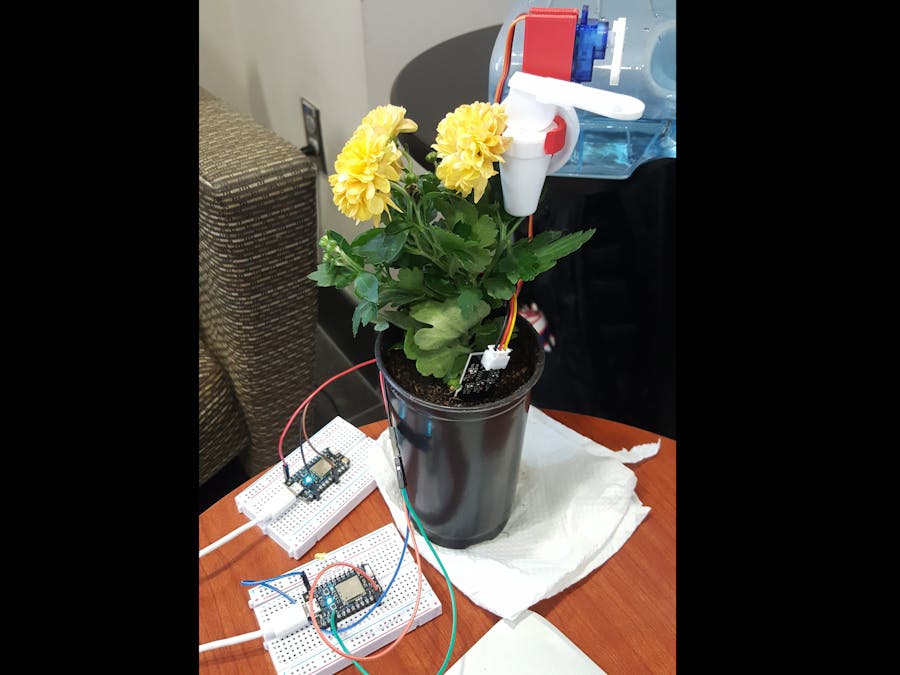This project illustrates how to create an automatic plant watering system by having a particle photon read values from a moisture sensor and convey "dry" or "wet" to another photon which will power a servo motor to water the plant when it is dry. Once set up, this can run without any human interaction to keep your plants alive. You don't need to monitor it, tell it what to do, or do it yourself.
How does it work?
This is our Youtube video going over this project:
In our Youtube video and graph we took the moisture sensor out of the moist dirt (as opposed to waiting for the soil to get dry) to illustrate what would happen if the moisture sensor registered "dry".
The moisture sensor is placed into the soil near the roots of the plant and is connected to one of the photons.
The photon reads the sensor moisture measurements and publishes "wet" or "dry" every second, and also stores the exact value from the moisture sensor every minute as a variable that is sent to Google Sheets using IFTTT which makes a graph of the moisture values over time. A value over 3000 indicates that the soil is dry. Our live data can be see here: https://docs.google.com/spreadsheets/d/1thdUj9oSMjiEsWomJmK7ar34hpJrk9XYNWiGYoH-bYo/edit?usp=sharing
Connected to the second photon is a servo motor that is inside of a 3D printed mount made for our water container. A longer arm had to be 3D printed for the servo motor as well.
The second particle photon listens to the signals given by the first particle photon. When the second photon receives a signal of "dry", the servo goes into the "ON" state, where the servo position changes by a value of 40, which presses the water tap down, dispensing water onto the plant.
After 2 seconds, the photon puts the motor back into the "OFF" state which returns the servo to the starting position, turning the tap off. The second photon then waits 30 seconds before interpreting signals again to allow time for the water to soak into the soil.
If the second photon receives a "wet" signal, the motor remains in the "OFF" state.
The first photon has a LED light connected to digital output 1. When the motor is in the "ON" state, the second photon sends a signal to the first to turn the LED light on. When the motor is in the "OFF" state the LED is kept off.
This project was created by Eann Lawing and Kathleen M. for our Intro to Instrumentation and Measurement course at UNCC. The requirements were to have two particle photons communicate back and forth and to display data from a photon on a graphing software. An automatic plant watering system based on data collected from a moisture sensor satisfied our criteria. This project could be altered to only use one particle photon.







_4fHR6QERiY.jpg)







Comments